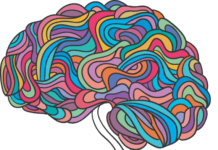Obesogens – Definition – Chemicals that interfere with how the body’s hormones function (also called endocrine-disrupting chemicals) and that may be involved in weight gain and obesity. Relevance – Although more research is needed, examples of chemicals that may be obesogens include cigarette smoke, air pollution, flame retardants, bisphenol A (BPA) and some pesticides, among others
Oligosaccharides – Definition – Oligosaccharides are a type of carbohydrate that resist digestion in the gut and are found in some plant foods. Relevance -Oligosaccharides act similarly to dietary fiber, improving GI health, stabilizing blood sugar, and regulating triglyceride metabolism; they are found in legumes, wheat, asparagus, artichoke, leeks, onions, jicama and chicory root.
Omega-3 – Definition -Omega-3 fats are polyunsaturated fatty acids (PUFAs) that are essential fatty acids, meaning they are beneficial to the body and must be obtained from food, such as cold-water fish (salmon, tuna, mackerel), green leafy vegetables, walnuts, and flaxseeds. Relevance -Omega-3 fatty acids cannot be made by the body so they must be obtained through the diet, especially because they have been shown to improve heart health by lowering LDL cholesterol and triglyceride levels, reducing blood pressure, and acting as anti-inflammatory agents.
Omega-6 – Definition -Omega-6 fats are polyunsaturated fatty acids (PUFAs) that are essential fatty acids, meaning they are beneficial to the body and must be obtained from food, such as nuts, seeds, corn oil, sunflower oil, and other plant oils. Relevance – Just like omega-3 fats, omega-6 fatty acids cannot be made by the body so they must be obtained through the diet, although most Americans consume plenty. Omega-6 fats also lower LDL cholesterol and protect against heart disease.
Omega-9 – Definition -Omega-9 fats are unsaturated fatty acids that are non-essential because they are produced in the body. Relevance -Omega-9 fats are present in animal fats and certain plant oils such as oleic acid, a component of olive oil, and erucic acid, a component of canola oil and mustard seed.
Optic nerve – Definition – The nerve that connects your eye to your brain, where electrical impulses are ultimately interpreted as visual images. Relevance – In glaucoma, the optic nerve is eroded slowly over time, resulting in gradual vision loss starting with peripheral (side) vision and potentially progressing to blindness, especially if not caught early and managed.
ORAC – Definition -Oxygen radical absorbance capacity (ORAC) is used to measure the antioxidant function and capacity of certain foods. Relevance – Although there are many tests intended to measure antioxidant activity, ORAC is the most commonly used; the USDA’s Nutrition Data Laboratory removed the USDA ORAC Database for Selected Foods from their website because of strong evidence that the values are unrelated to the health effects of the bioactive compounds.
Osteoporosis – Definition -Osteoporosis is a condition common in older women in which the bones become porous, therefore making them weaker and at higher risk of breaking. Relevance – Osteoporosis has no symptoms usually, as most people are not aware that they have it until they break or fracture a bone; calcium and vitamin D intake throughout life, as well as exercise, are essential to maintaining strong bones and preventing osteoporosis.
Oxalates – Definition – Oxalates are naturally-occurring organic acids that can form precipitates with certain metal ions and are found in spinach, berries, leeks, parsley, Swiss chard, quinoa and many other fruits, vegetables, nuts, grains and legumes. Relevance – A food with high oxalate content decreases the body’s ability to extract certain nutrients from that food, like iron and calcium, and must be limited in the diet for patients at risk for kidney stones.
























